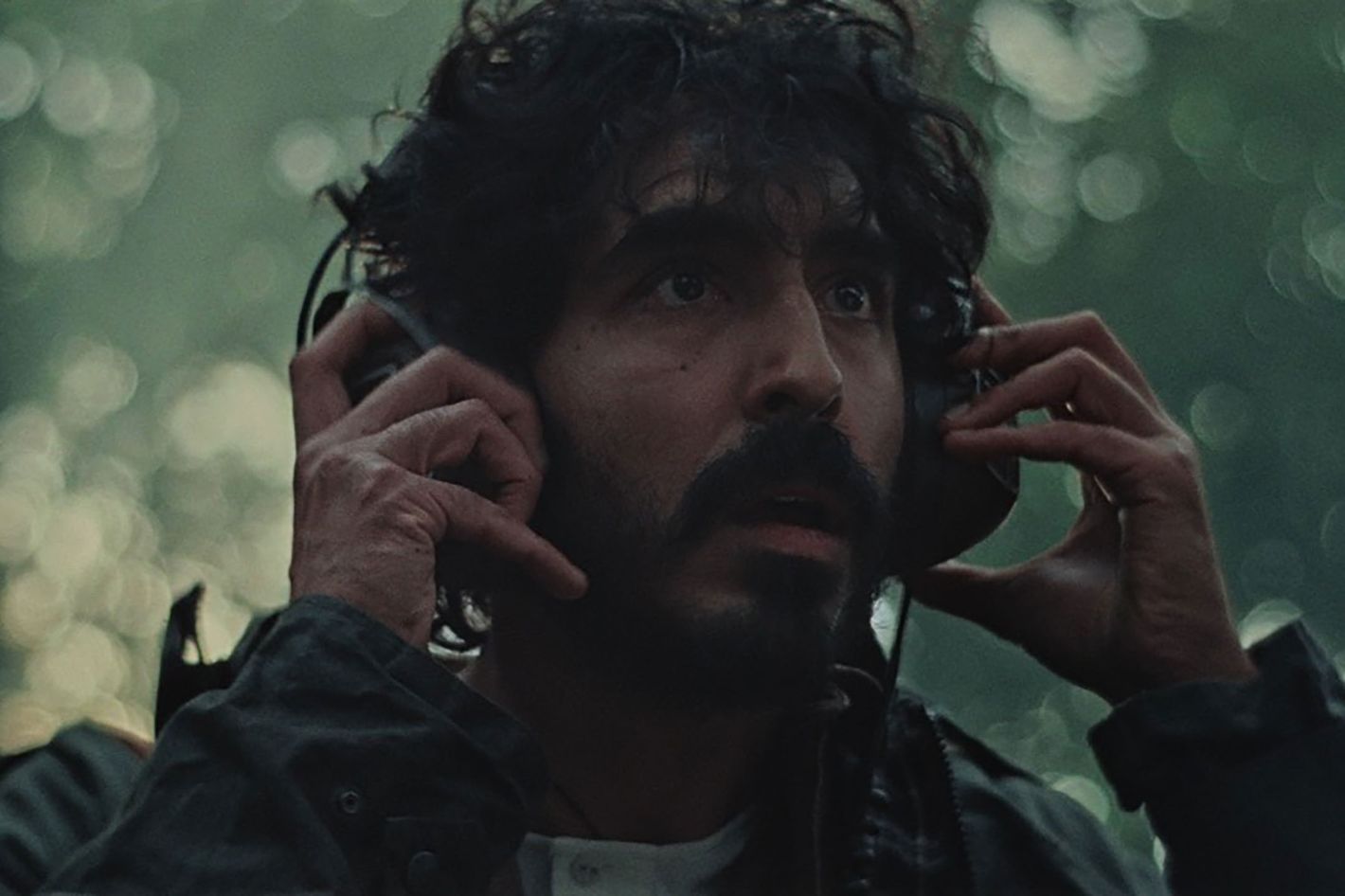Rabbit Trap Needs More Than Technical Razzle Dazzle


Set in the Welsh countryside and blasted through with sounds both natural and otherworldly, Bryn Chainey’s folk-horror mood-piece Rabbit Trap, which premiered at Sundance, boasts incredible technical confidence. It has to: The film follows two married audio engineers and musicians, Darcy (Dev Patel) and Daphne (Rosy McEwen), who’ve bought a rural home in the middle of nowhere, which will allow them to freely record and experiment with the dramatic sounds around them. They capture the wind, the water, the mud, the crunching earth, the murmurations of birds. In bed, Darcy gently runs the microphone over Daphne’s arms and face and makes her listen to the music of her body. At its best, the picture serves as a reminder that the best horror utilizes audio even more than it does imagery or narrative. But it also reminds us that movies sometimes need more than just technical razzle dazzle.
The film is set in 1976, and director Chainey, making his feature debut, has a lot of fun indulging in the tactile technology of the era. All those records and tapes and spools and switches and knobs feel as much part of the landscape as the thistles, the moss, the crags, the forests. Out of the fields one day comes a mysterious boy (played by a creepily fresh-faced Jade Croot) who brings with him tales of faeries and other myths of the region and quickly becomes unnaturally attached to the couple. Did he show up because Darcy inadvertently stepped into a faerie circle made of mushrooms? Is he an expression of the couple’s lightly-hinted-at desire to have a child?
This is where things start to fall apart. We get very little insight into these characters, and even less development. Darcy has paralyzing nightmares about a large, demonic man eating in the bed next to him — we can tell it’s a repressed memory (isn’t it always?) but the film doesn’t really do much with it, other than to hand-wave in the general direction of childhood trauma. It seems Darcy has these nightmares all the time, but Daphne’s curiosity seems weirdly new; his stated refusal to speak about it seems less like something out of a couple’s ongoing dialogue and more like something uttered for our benefit.
The movie does have a lot to say about repression and burial. You can’t really call it subtext, because the film literally screeches it at us from minute one. It opens with a loud, deafening, demonic voice rasping on about how sound and music run into the earth, into the darkness of the underworld, “for the ground is a body, and the body is where your secrets lie.” Later, Darcy asks Daphne, “Do you ever just want to dissolve, to just melt into the earth?” Honestly, the picture is full of lines like this. Sound is “the invisible shadow of an energy exchange … a memory carved into the air.” “Noise is the oldest of gods. Before language. Before flesh.” “When you hear a sound, you become its home.” I think my favorite is “With your eyes, you enter the world. With your ears, the world enters you.” A little of this stuff goes a long way, and a lot of this stuff goes a little way.
With its whisper-thin characters, vague narrative, and acres of portentous poetry about sound, Rabbit Trap feels somehow both underwritten and overwritten. It has plenty of time to ruminate about the symbolic connections between sound, ground, demons, faeries, and rabbits, but it can’t answer basic questions about the humans onscreen. And it doesn’t just fail to answer questions, it can’t manage to make us feel anything, beyond that ever-present rumbling in our stomachs that comes with a good sound system. (If you do see it, see it in a theater.) Director Chaney clearly has a lot of skill and talent. But for all of Rabbit Trap’s technical accomplishments, it’s very hard to be frightened or moved by something that never stops feeling like an exercise in style.
More From The Sundance Film Festival

Latest News
For Sale! 2016 Sea Ray 350 Sundancer – $180,000
Reel Deal Yacht is pleased to feature a meticulously maintained 2016 Sea...
Classic encounter on ice as United States wins women’s hockey worlds 4-3 in OT against Canada
Tessa Janecke scored the winner as the United States prevailed in overtime...
Justin Thomas ends 3-year drought with playoff victory in RBC Heritage
Justin Thomas had one more hurdle to prove his game was back...
Derrick White scores 30, Tatum stays in game after fall and Celtics beat Magic 103-86 in Game 1
As the Celtics were taking control of their playoff opener against the...
Mitchell, Jerome help Cavaliers rout Heat 121-100 in Game 1 of 1st-round series
Donovan Mitchell scored 30 points, Ty Jerome had 16 of his 28...













